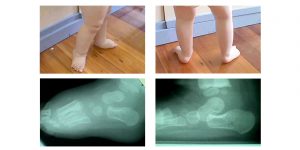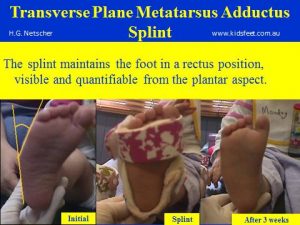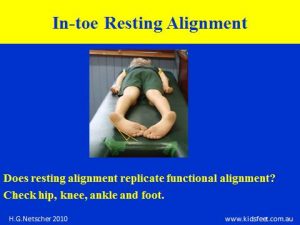Flat feet (sometimes called ‘banana foot’):
- The ‘arch’ of the foot is not an ‘arch’ but a bulge on the inside mid-section of the foot.
- The foot appears to have an arch when not weight bearing, but no arch when weight bearing
- When the child walks, the toes 2,3,4,5 claw at the ground on push-off, and the joint in the big toes curls upwards
- The heel tips inwards, and may look bulbous.

Postural Development Problems: Some problems are listed below:
- Unusual crawling style:
- commando crawl (lying on the stomach)
- Crab crawl (one foot tucked under the bottom)
- Knee crawling (the child ‘walk’ on their knees
- Bottom shuffle
- Bear crawl (the knees are not on the ground
- The child is 8 months old and not crawling
- The child is 15 months old and not walking
- Falls over nothing or is clumsy
- If over 2.5 years and not walking with the feet pointing straight ahead
- If over 3.5 years and cannot stand on one leg or cannot hop 5 times on either leg
- If over 4.5 years and cannot turn the feet in and out without the hands turning in or out
- If over 7 years and cannot stand on 1 leg with the eyes closed for 10 seconds
- Tires easily when shopping or going for walks
- If you or someone else thinks your child is ‘lazy’
- The child can sit in the ‘w’ position
- When at rest and seated over the edge of a chair, the feet or legs are turned in or out, or point straight down.
- The sleeping position alignment of the feet and legs replicates the walking alignment problem
- Does not like wearing shoes
- Walks pigeon toed, on tip toes, with feet turned out
- Has tight hamstrings:
- Have the child lay down on the back, legs out straight.
- Then bend one leg at the knee, so that the thigh is vertical
- Then while keeping the thigh vertical, very slowly and gently raise the lower leg until there is resistance
- DO NOT FORCE the leg any higher than this
- If the lower leg does not easily reach vertical or near vertical, the child has tight hamstrings and should be assessed.
In-toeing/ Pigeon Toes/ Metatarsus Adductus:
- To determine whether your child has metatarsus adductus, place a biro or ruler along the outside border of the foot held at the heel. If the front end of the foot is turned inwards metatarsus adductus is present

- For general in-toeing/ Pigeon toes, check alignment of the feet and legs when your child is asleep. In-toeing can be due to problems in the hips, lower leg, and/ or feet. It is important that the location of the problem is identified.

